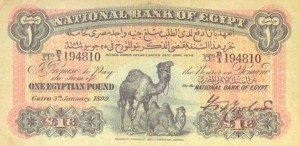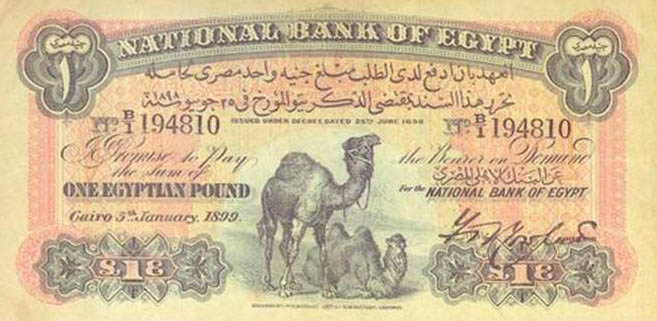
Yesterday marked the anniversary of the Egyptian pound banknote, 114 years since its debut in 1899. The Egyptian pound first came into existence as a result of a Khedival decree in 1834, replacing the piaster. The first banknote printed by the National Bank of Egypt (now the Central Bank of Egypt), was in 1899.
The first pound banknote featured a camel and an inscription in classical Arabic that translates to: “I vow to pay upon request the amount of one Egyptian Pound to its bearer. This bond has been written on the date of 25 June 1898.”
Part of the conditionality of the IMF loan Egypt has accepted, is the government not intervening to use foreign reserves to stabilise the value of the pound. After the economy taking a hit after the 25 January uprising, the Egyptian pound has hit an all-time low value compared to the US dollar in eight years, 1 US dollar to 6.39 Egyptian pounds as of this writing.
In 2006, coins were introduced by the central bank to replace all notes under 5 pounds,
which means the banknote is being replaced by a bimetallic coin.
All coins and banknotes feature famous landmarks from Egypt’s history, specifically its Pharaonic and Islamic eras. The notes showcase a famous historic Islamic landmark such as the Ibn Tulun mosque or the Mohamed Ali mosque on one side and a pharoanic landmark or icon on the other such as the Sphinx and Tutankhamun. The notes also feature some Arabic inscriptions and are bilingual.
The introduction of the one pound coin means the eventual death, in phasing out, of the one pound banknote, which still exists today in a different form. Though dark days may lie ahead, perhaps it is a time to celebrate the one pound banknote before it dies, before we have to celebrate the pound itself, in all forms, before it dies as well.





